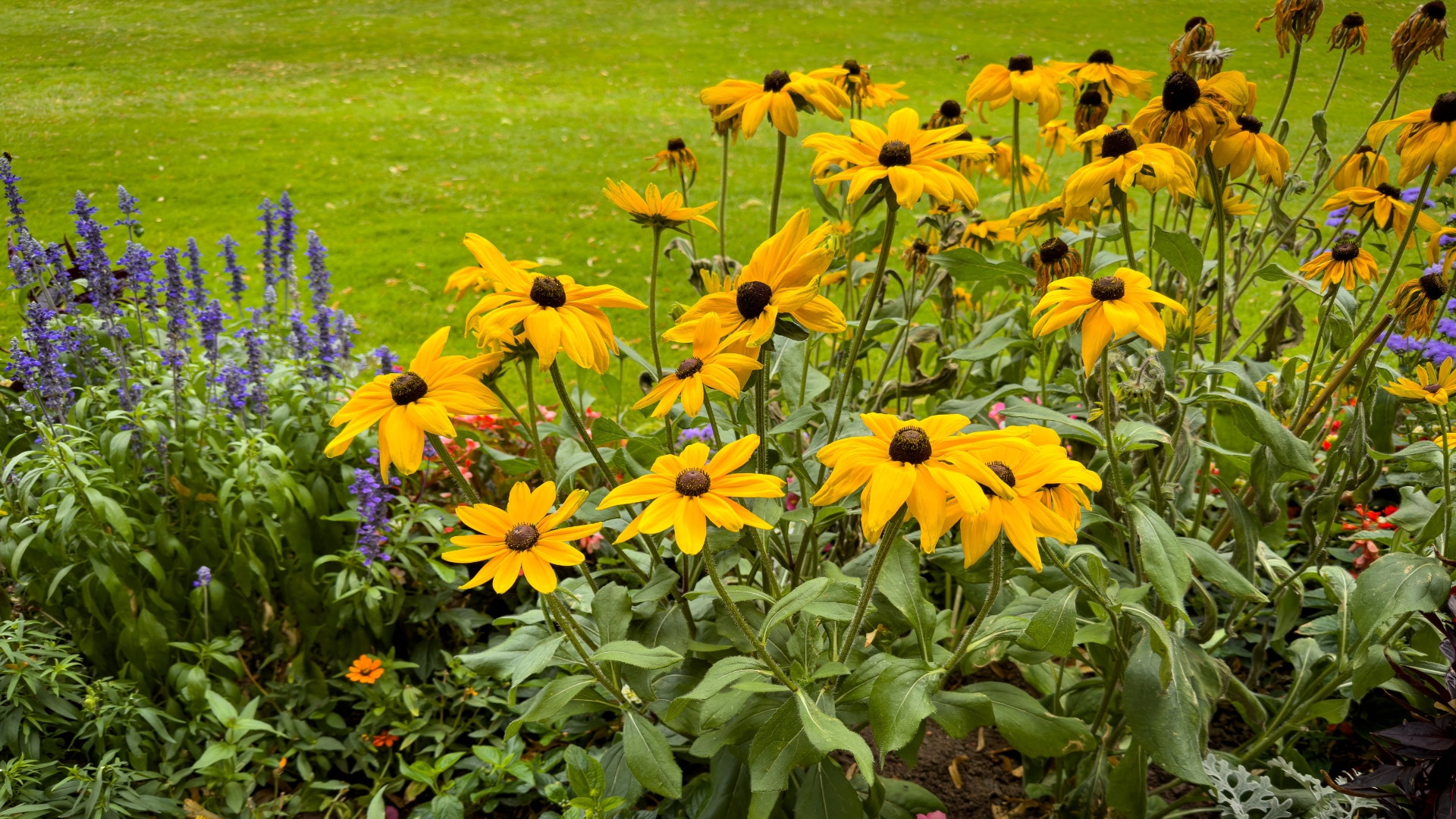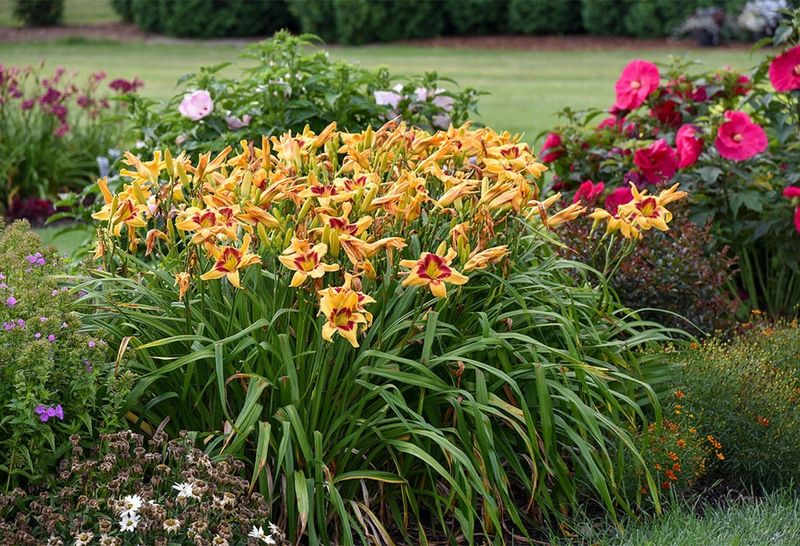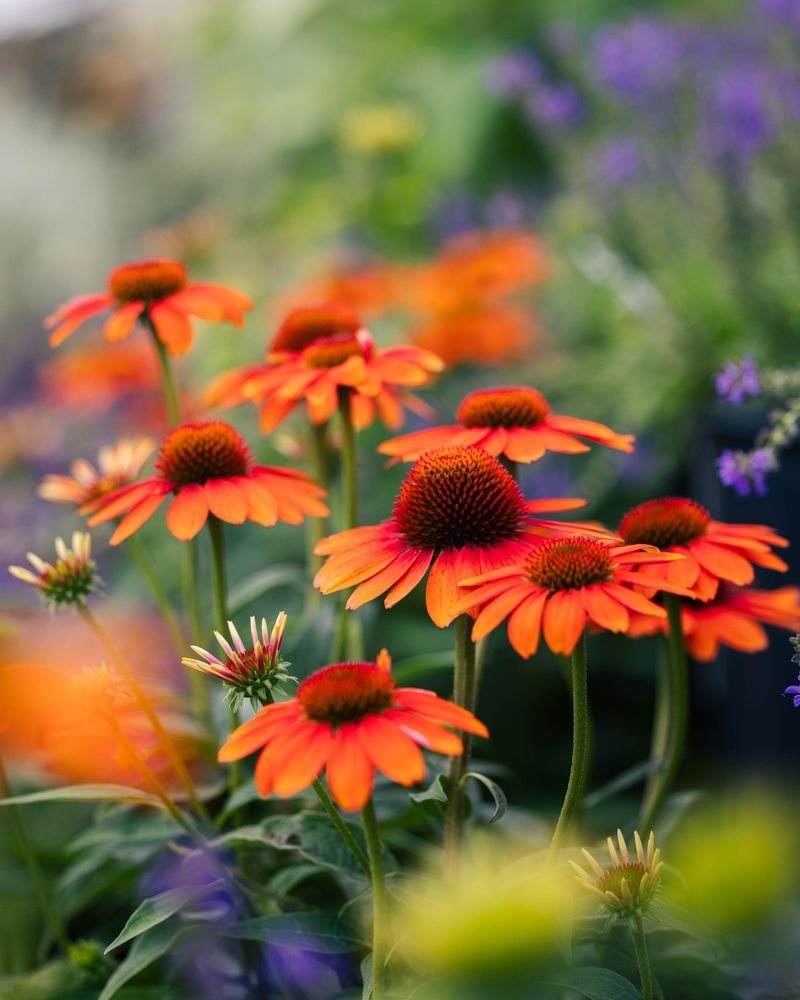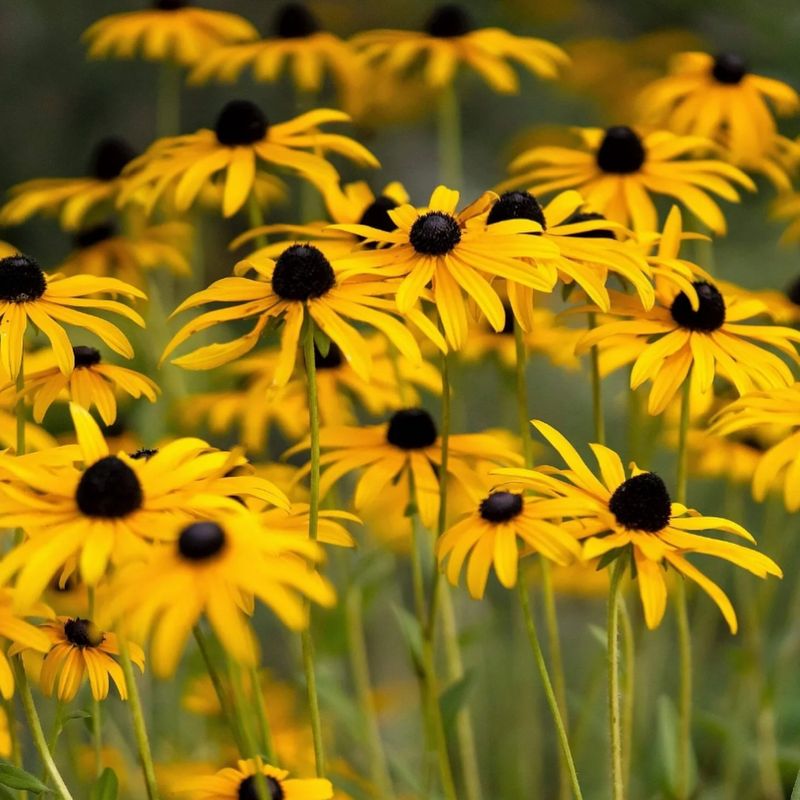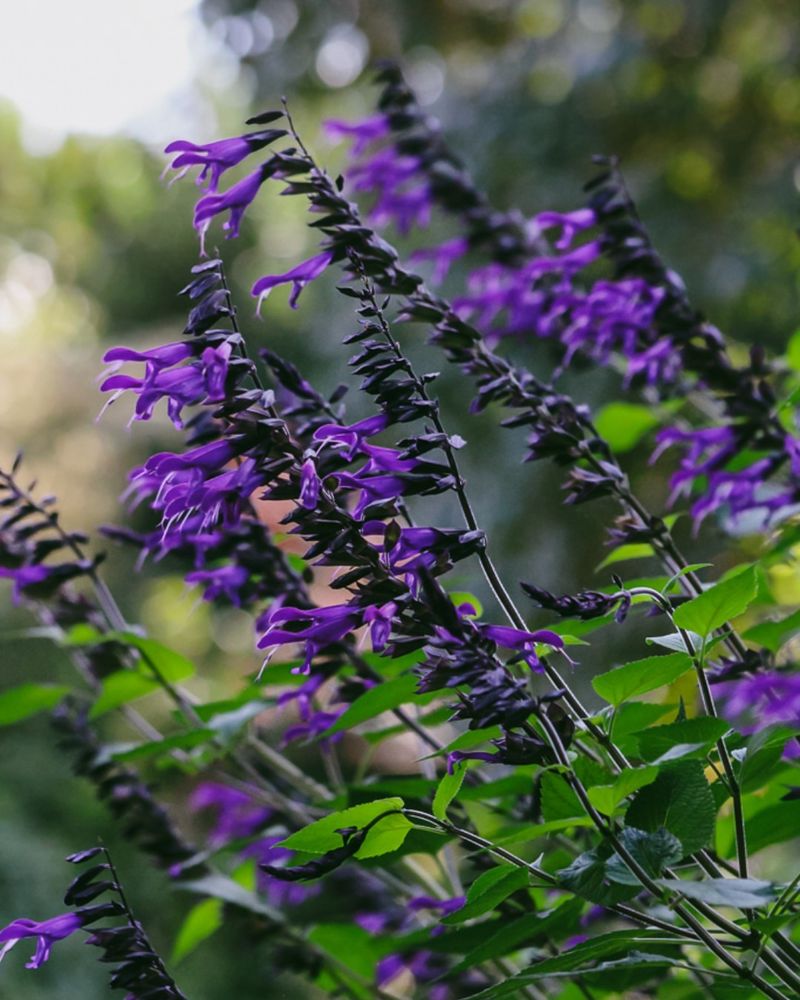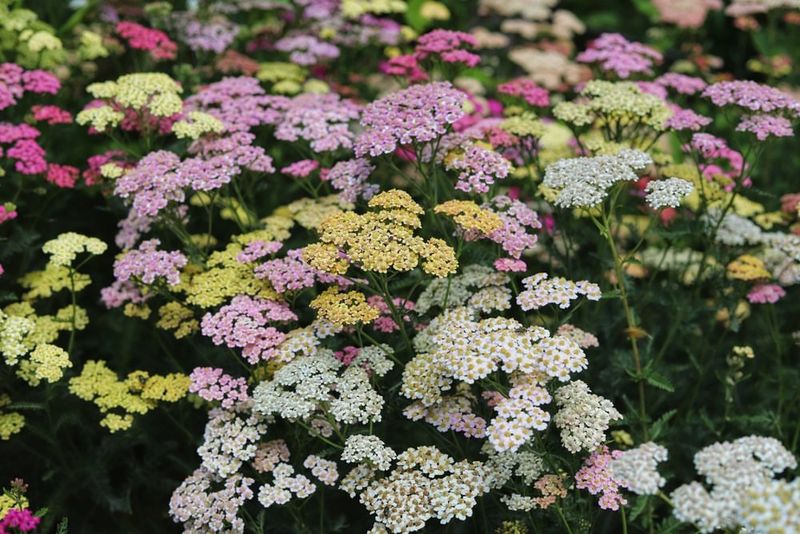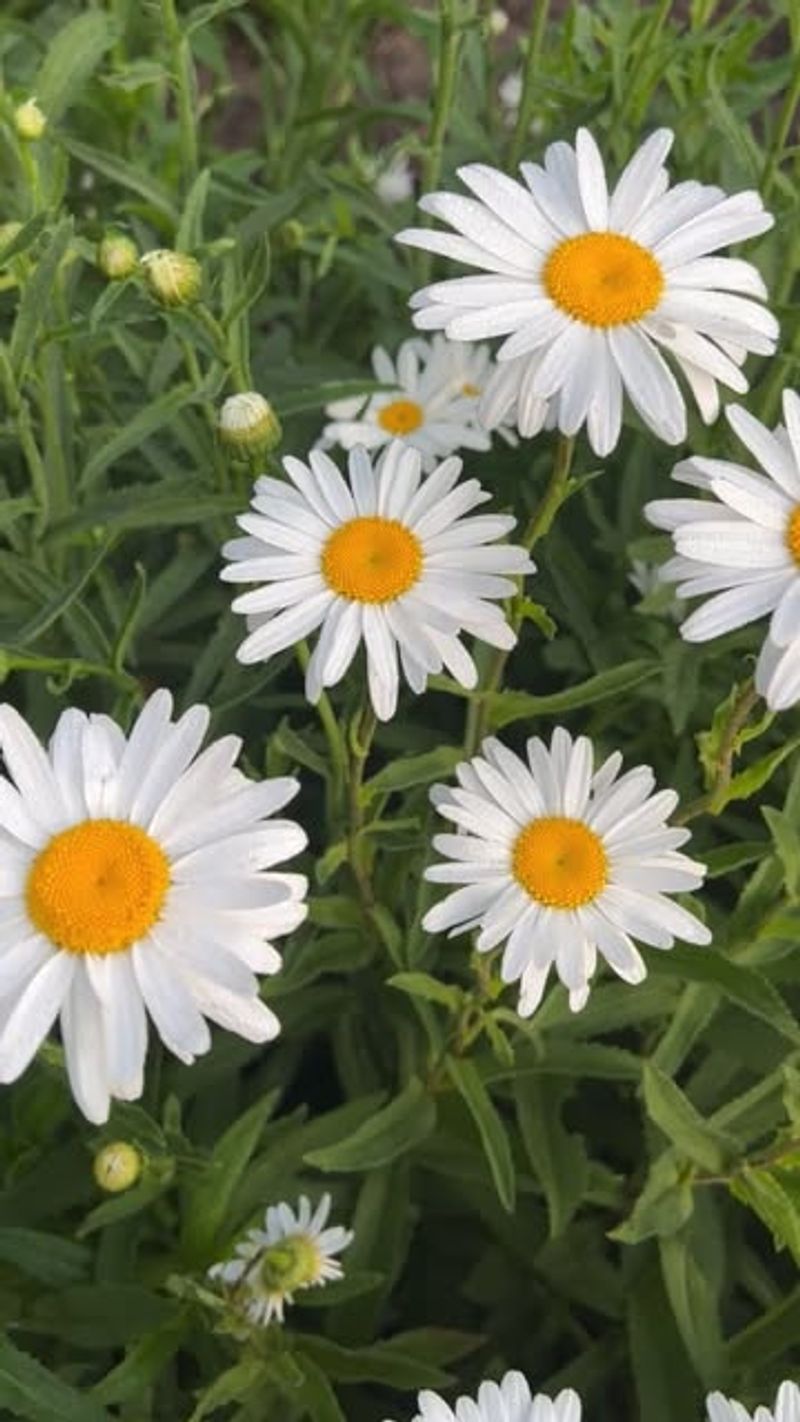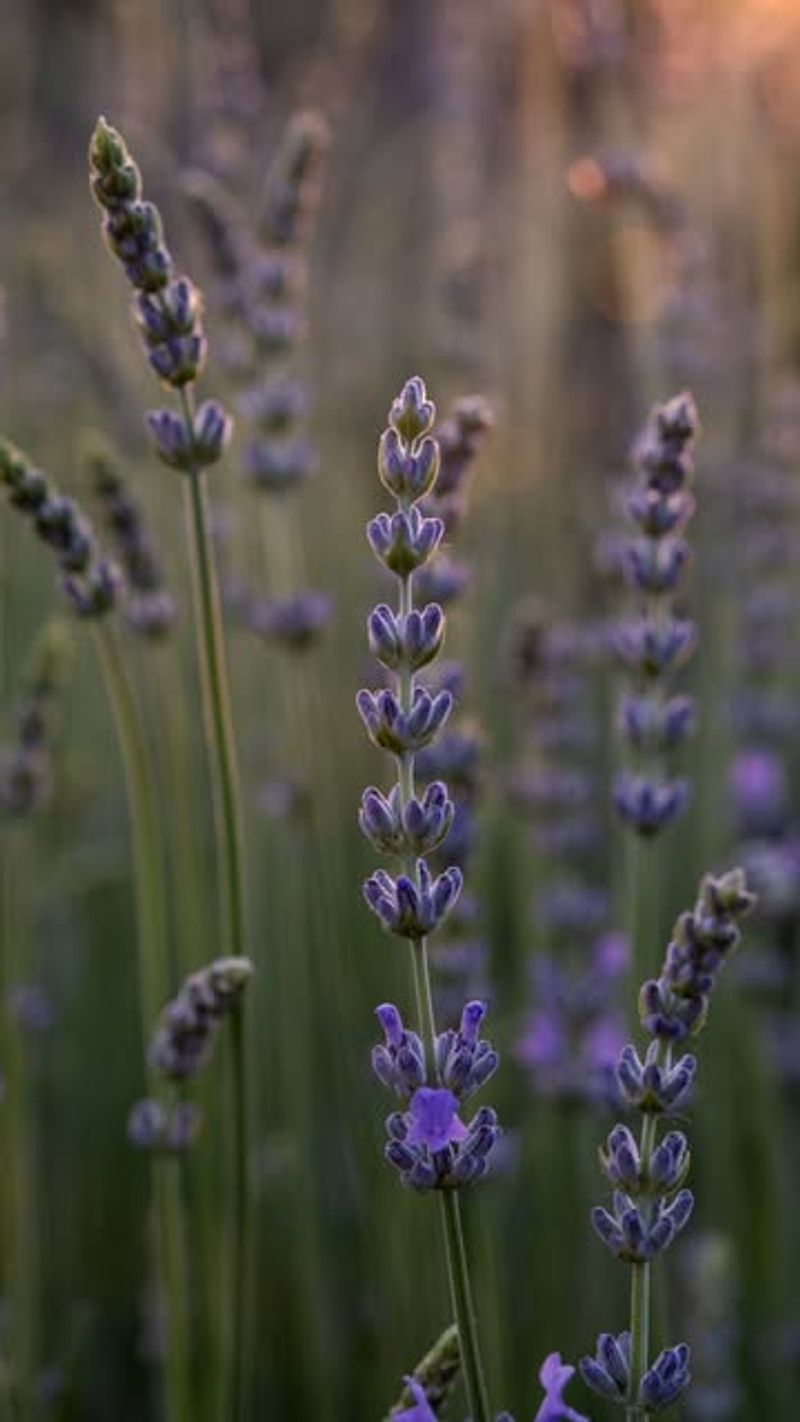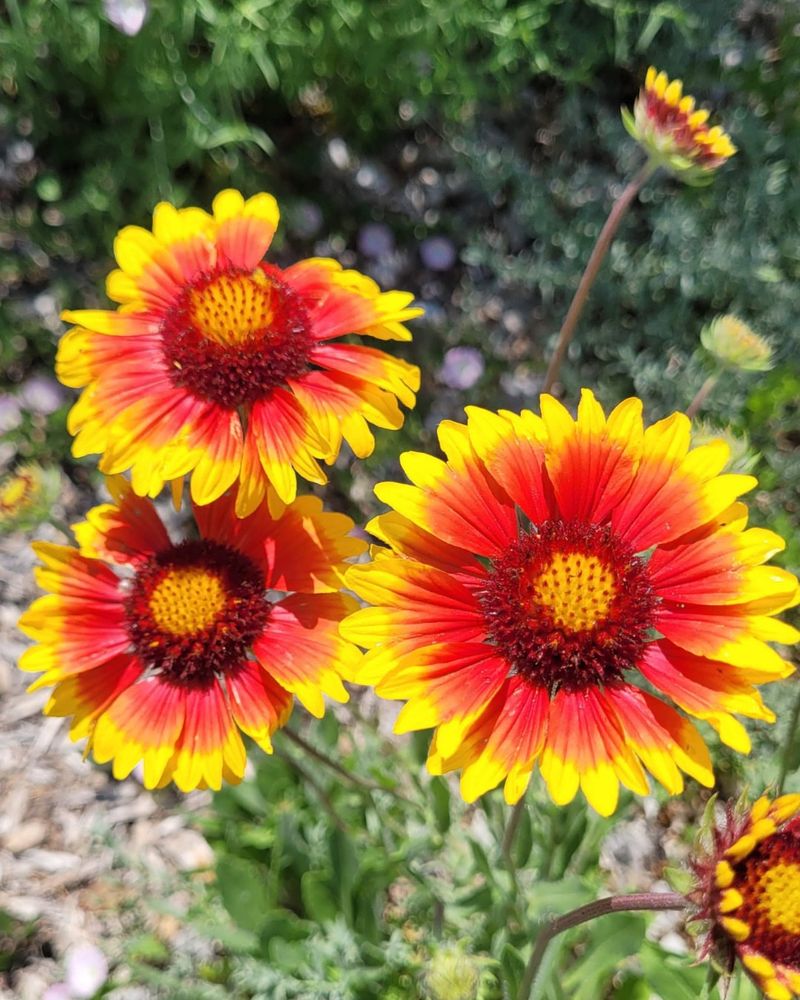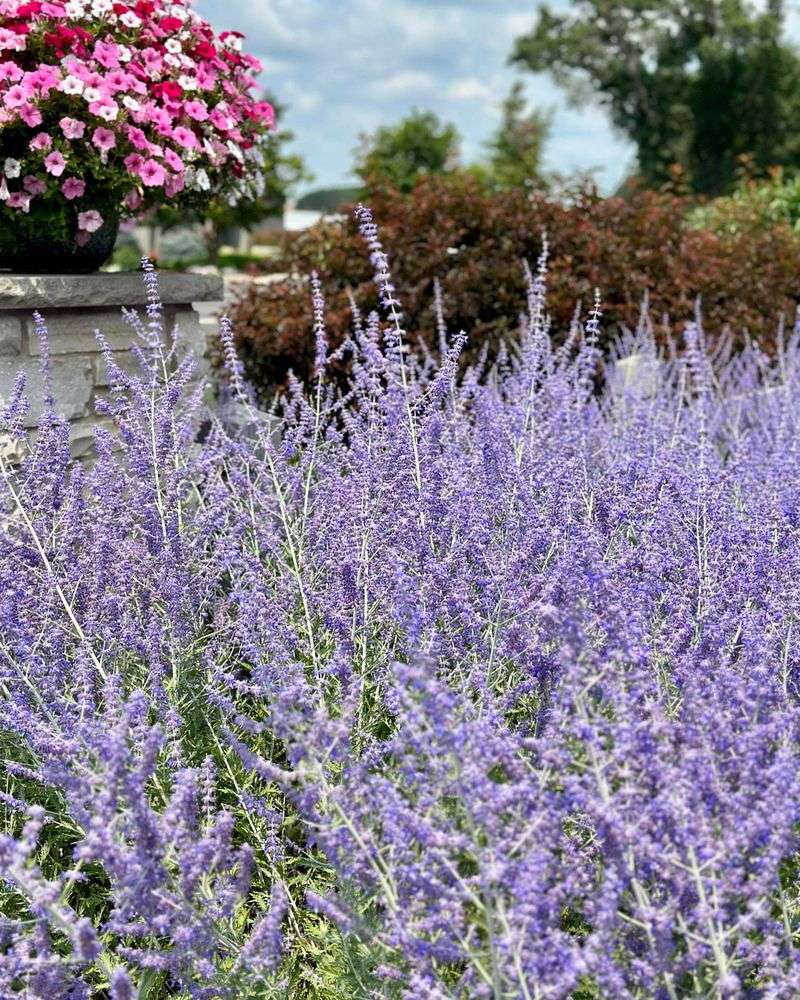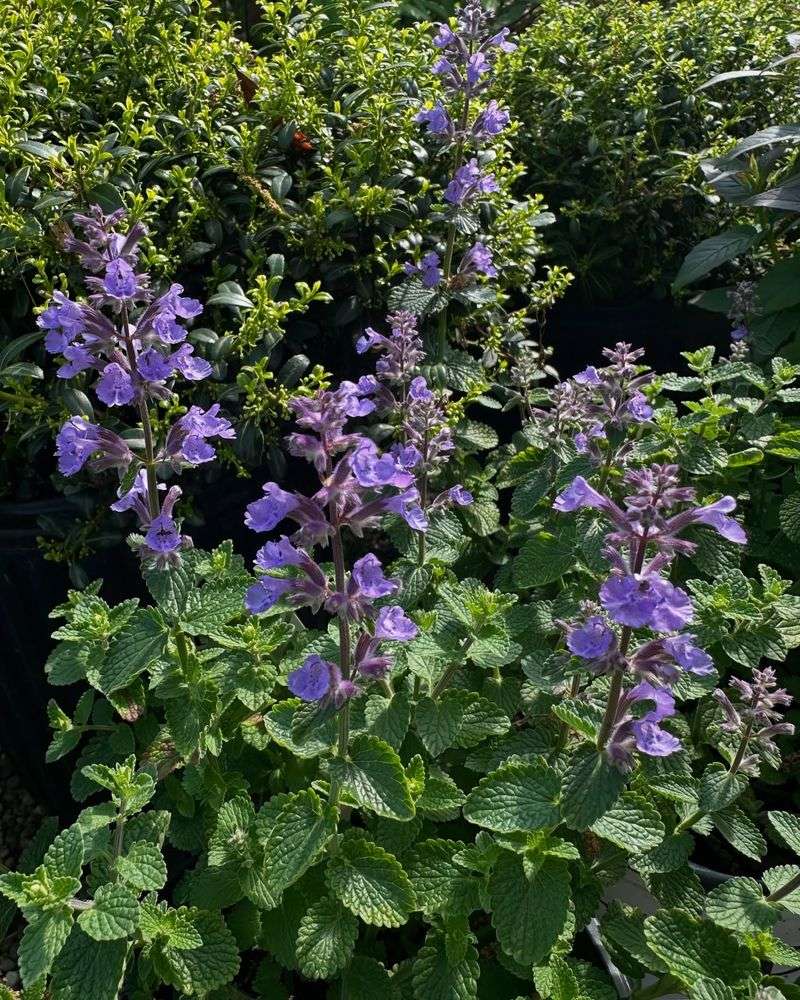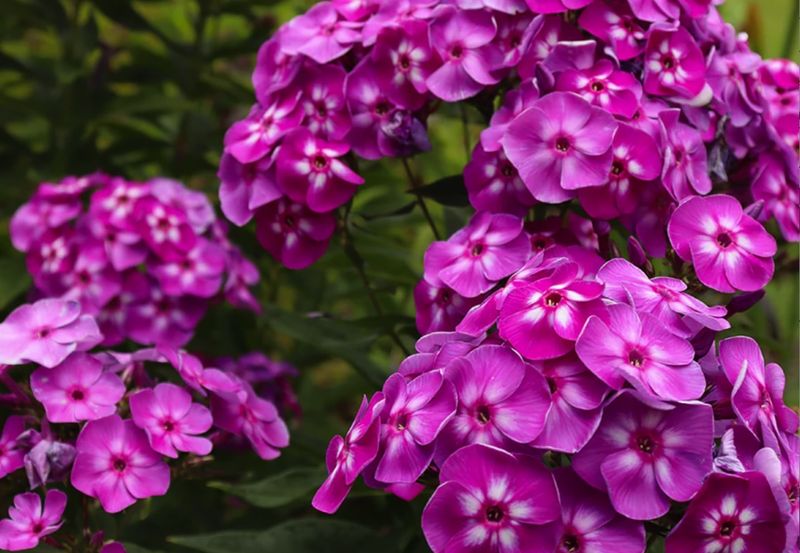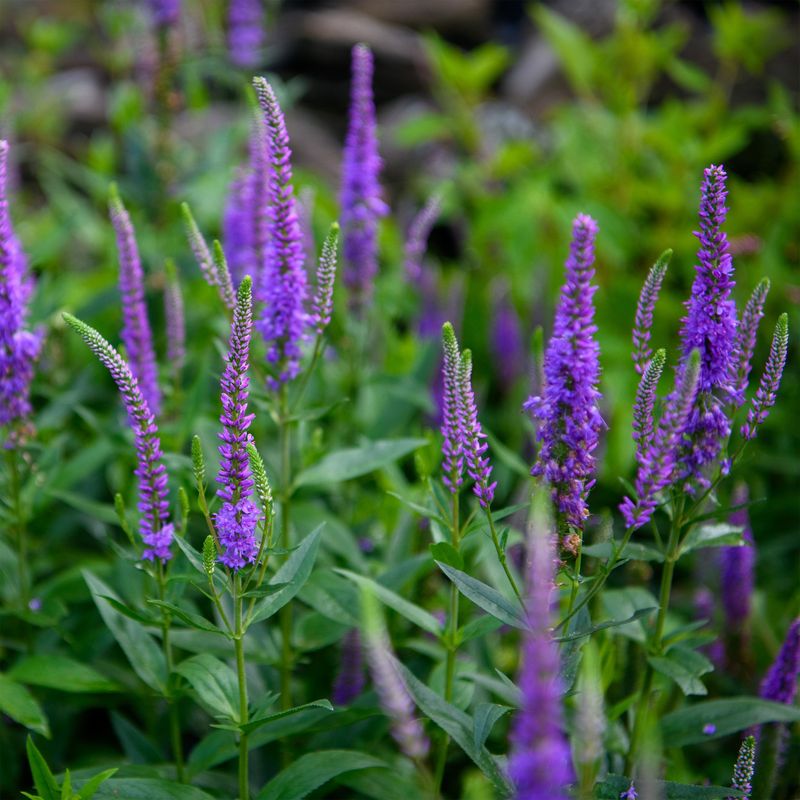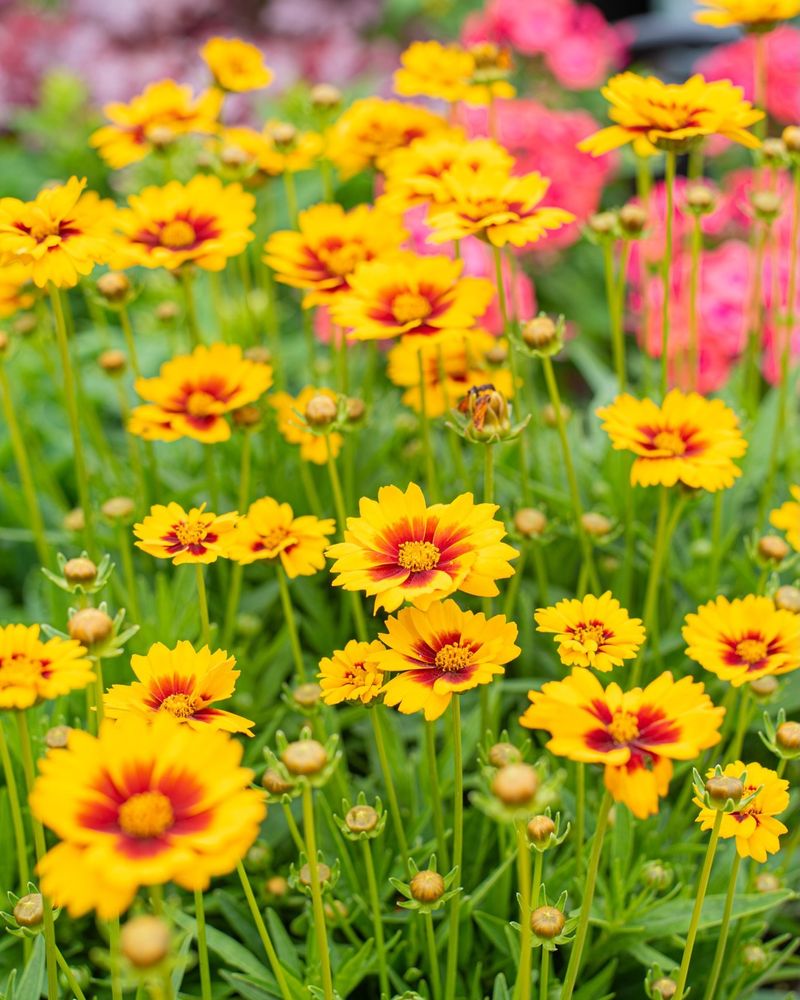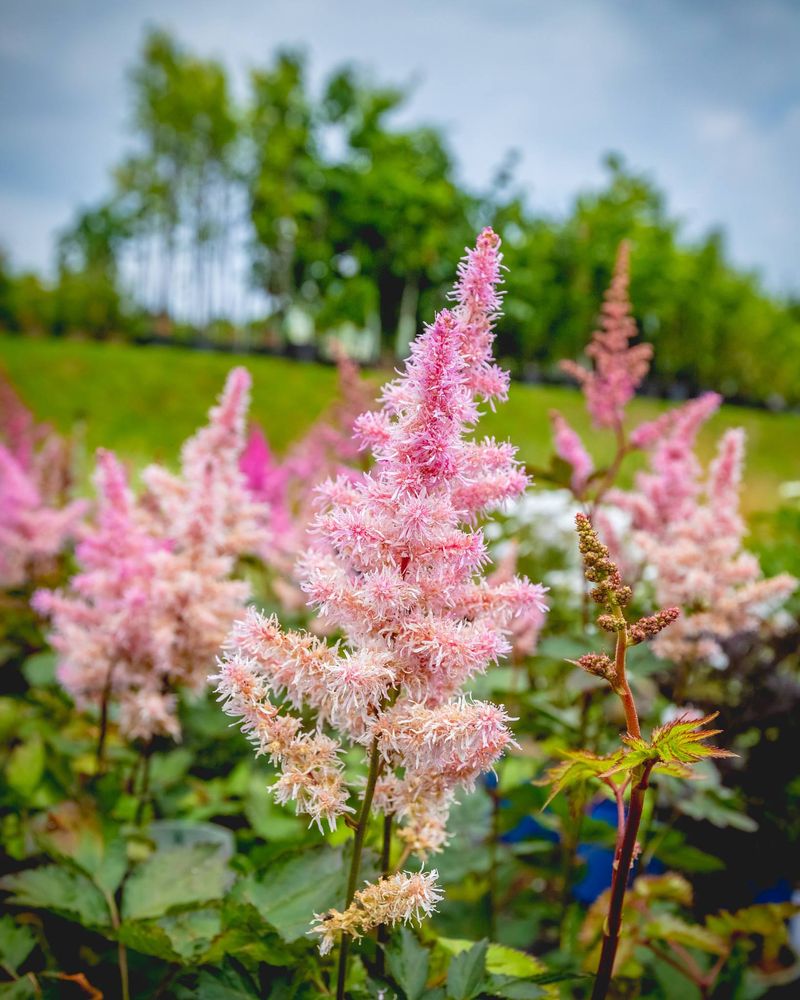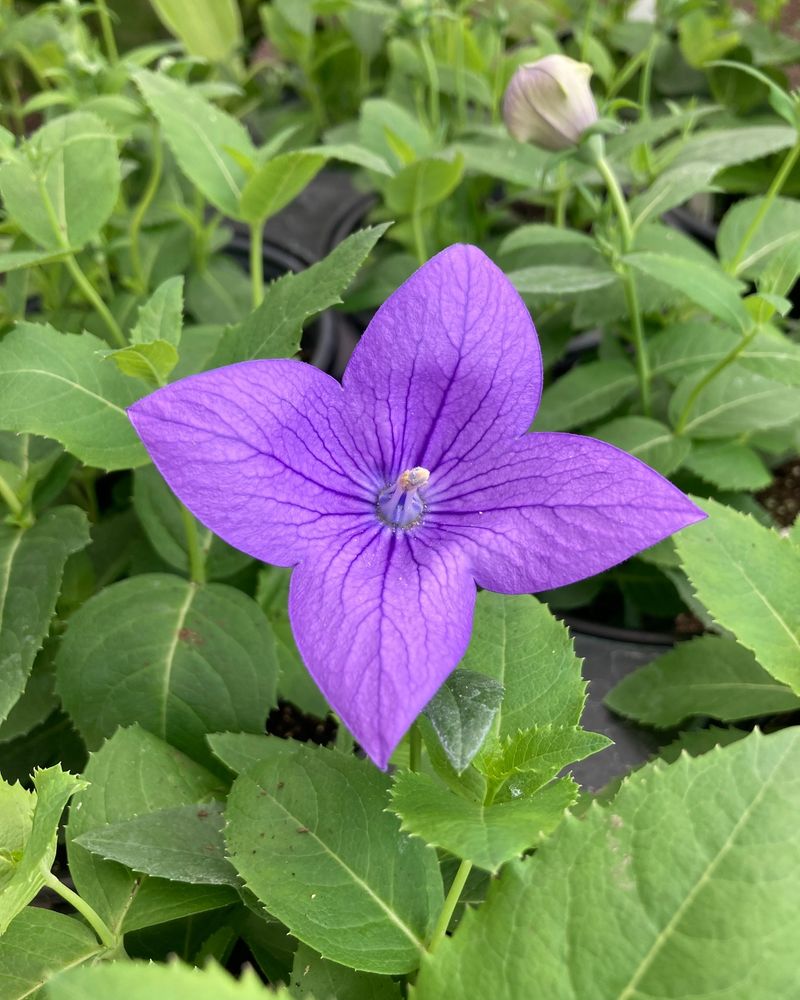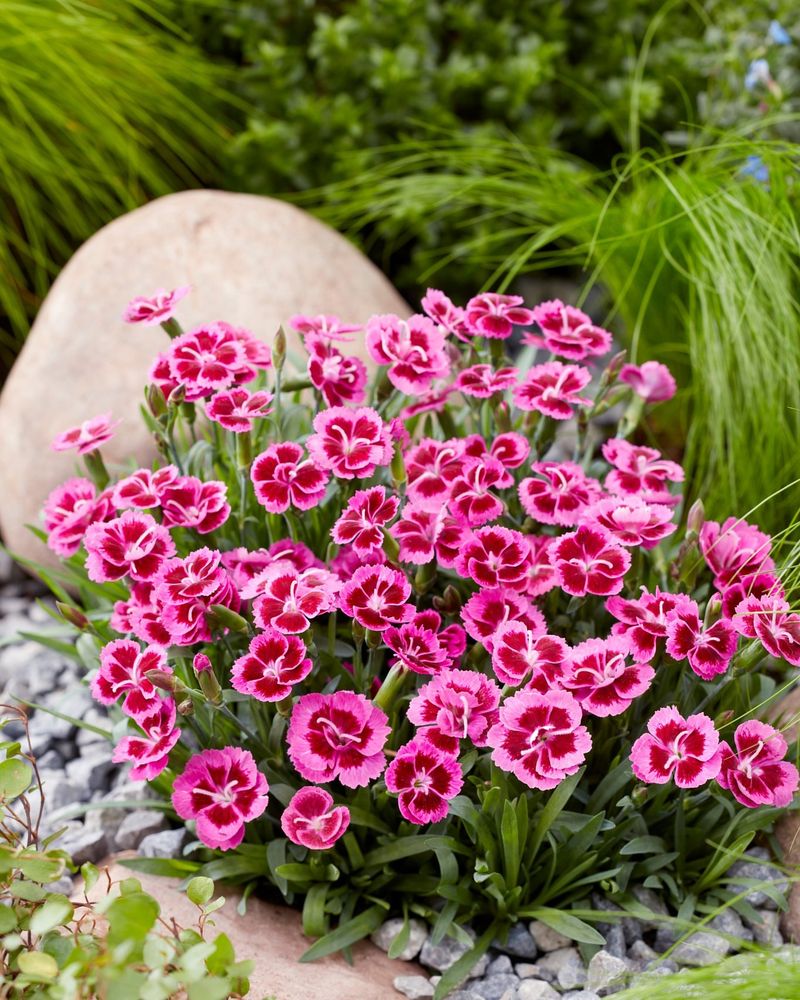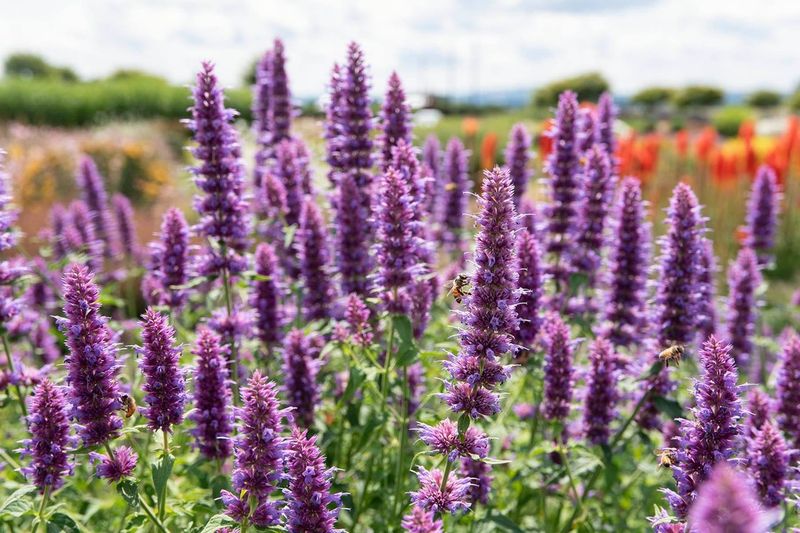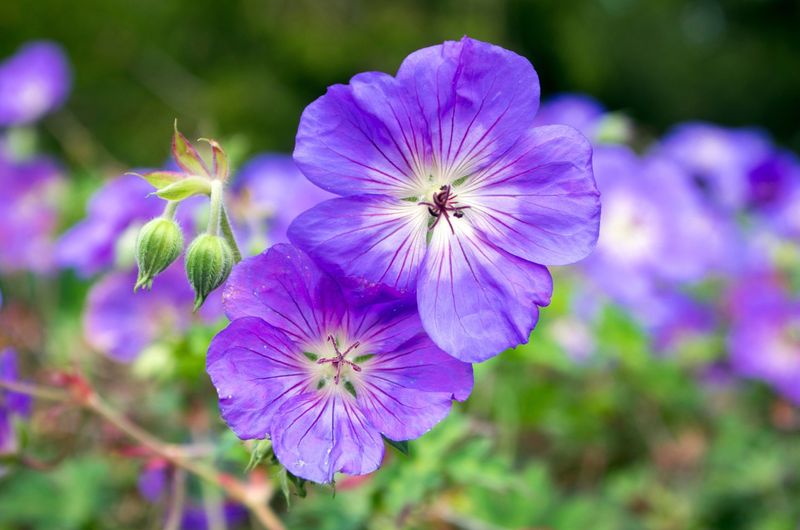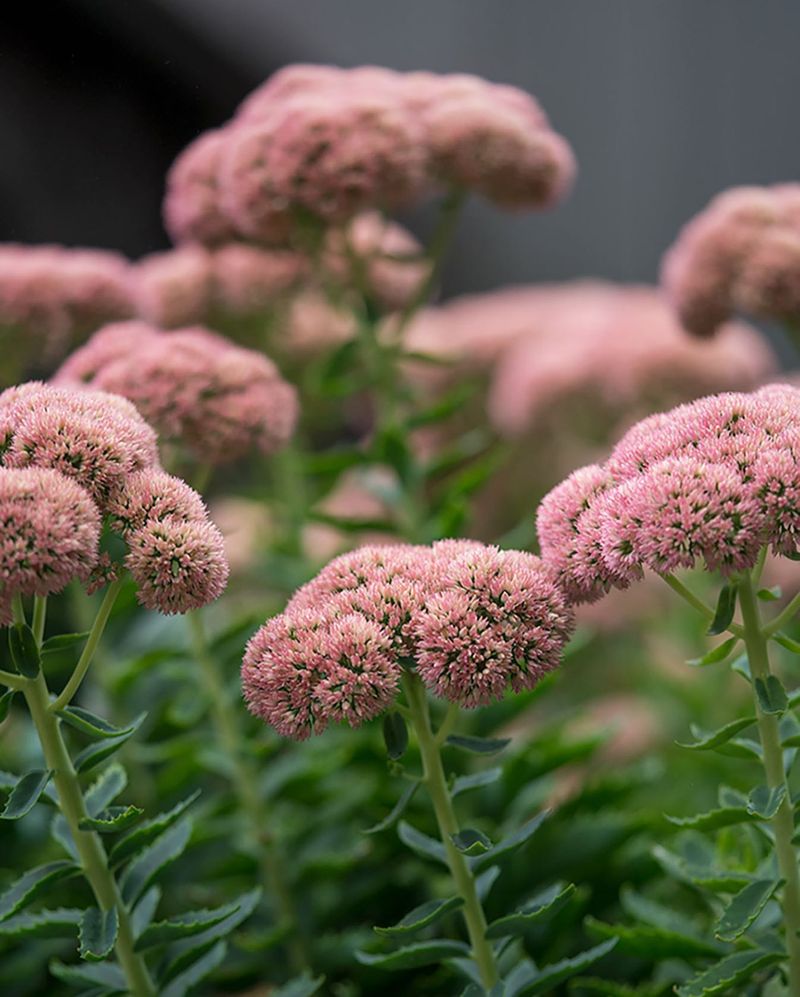There’s something extra satisfying about flowers that keep showing up year after year without a fuss. I planted a few of these summer bloomers once, and now they feel like old friends popping in just when the garden needs a splash of color.
The best part? They don’t ask for much—just a little care here and there to keep the show going strong. If you’re after reliable color and low-maintenance beauty, these are the plants worth keeping around.
1. Daylilies
These tough-as-nails beauties come in hundreds of colors and bloom for weeks on end. Dividing crowded clumps every 3-4 years keeps them vigorous and flowering abundantly.
Remove spent blooms promptly to encourage more flowers and prevent seed formation that drains energy. A layer of compost in spring and consistent watering during dry spells will maximize their stunning display.
2. Coneflowers
Native prairie champions with daisy-like blooms that attract butterflies and birds. Modern varieties offer stunning colors beyond the traditional purple, including coral, yellow, and white.
Deadhead regularly until late summer, then leave final blooms for birds to enjoy the seeds. Plant in well-drained soil with full sun for best performance and divide every 4-5 years when centers begin to die out.
3. Black-eyed Susans
Sunshine-yellow flowers with distinctive dark centers create cheerful drifts of color from midsummer through fall. Their drought tolerance makes them perfect for hot spots where other plants struggle.
Cut back by one-third in early summer for bushier plants with more blooms. Divide every two years to prevent overcrowding and maintain vigor, and deadhead regularly to extend the flowering season well into autumn.
4. Salvias
Spiky flower wands in blues, purples, and reds attract hummingbirds while deer tend to avoid them. Their aromatic foliage adds sensory appeal beyond just visual beauty.
Trim back by half after the first flush of blooms fades to trigger a second round of flowering. Well-drained soil is crucial for winter survival, and avoid overhead watering to prevent powdery mildew on their fuzzy leaves.
5. Yarrow
Flat-topped flower clusters in gold, pink, red, or white stand above ferny foliage that remains attractive all season. Their ability to thrive in poor soil makes them perfect for challenging spots.
Cut stems back after flowering to prevent self-seeding and encourage a possible second bloom. Divide every 2-3 years in spring when plants become crowded or start dying in the center for continued strong performance.
6. Bee Balm
Shaggy, crown-like flowers in red, pink, or purple create a spectacular summer show while filling the air with minty fragrance. Hummingbirds and butterflies can’t resist these native beauties.
Improve air circulation by thinning stems and removing lower leaves to prevent powdery mildew. Divide every 2-3 years in spring to maintain vigor and flowering, and ensure consistent moisture for best bloom production.
7. Shasta Daisies
Classic white flowers with sunny yellow centers bring cheerful simplicity to summer gardens. Their sturdy stems make them excellent for cutting and bringing indoors.
Deadhead religiously to extend blooming for months rather than weeks. Divide every 2-3 years in spring when centers begin to die out, and cut back foliage after fall frost for cleaner growth in spring.
8. Lavender
Fragrant purple spikes rise above silvery foliage, creating a Mediterranean feel even in ordinary gardens. The calming scent perfumes the air with every breeze.
Prune after flowering but never cut into woody stems – stay in the green growth zone. Good drainage is essential for winter survival, so plant in raised beds or slopes if your soil tends to hold moisture.
9. Blanket Flower
Fiery red and yellow daisy-like blooms resemble Native American blankets, bringing southwestern flair to gardens. Heat and drought tolerance make them perfect for hot, sunny locations.
Deadhead consistently to keep the non-stop flower show going from early summer until frost. Short-lived perennials, they may need replacement every few years, but their spectacular blooming makes them worth this small effort.
10. Russian Sage
Airy purple flower spikes atop silvery foliage create a dreamy, cloud-like effect in the landscape. Their drought tolerance makes them perfect for hot, sunny spots.
Cut back by one-third in late spring for bushier, more floriferous plants. Excellent drainage is essential for winter survival, so amend heavy clay soils with grit or plant on slopes where water moves away quickly.
11. Catmint
Clouds of lavender-blue flowers hover above aromatic gray-green foliage, creating months of color with minimal care. Cats may roll in it, but deer and rabbits typically stay away.
Shear plants back by half after the first flush of bloom to trigger a second impressive flowering display. Plant where their cascading habit can soften edges of paths or walls, and divide every 3-4 years in spring to maintain vigor.
12. Phlox
Fragrant flower clusters in white, pink, purple, or bicolors create a cottage garden feel while attracting butterflies. Their sweet scent is strongest in the evening, perfuming summer nights.
Improve air circulation by removing lower leaves and thinning stems to prevent powdery mildew. Deadhead promptly to prevent self-seeding and encourage continued flowering, and divide every 3-4 years to maintain vigor.
13. Veronica
Slender spikes of blue, purple, pink or white flowers rise above neat mounds of glossy foliage. Their upright habit adds vertical interest to the middle of flower borders.
Cut flower stalks back after blooming to encourage a second flush of flowers. Mulch to keep roots cool and moist during summer heat, and divide every 3-4 years in spring when centers begin to die out.
14. Coreopsis
Masses of golden, buttery blooms cover these carefree plants from early summer until frost. Newer varieties offer colors beyond yellow, including red and bicolor options.
Shear plants back by one-third in midsummer when flowering slows to rejuvenate and trigger fresh blooms. Divide every 2-3 years to maintain vigor, and deadhead regularly to prevent self-seeding and encourage more flowers.
15. Astilbe
Feathery plumes in white, pink, red or lavender add elegant texture to shady spots where few perennials bloom. Their fern-like foliage remains attractive even when not in flower.
Keep soil consistently moist, especially during flowering, as they won’t tolerate drought. Remove spent flower stalks but leave the attractive foliage intact, and divide every 3-4 years in spring when growth becomes crowded.
16. Balloon Flower
Fascinating buds inflate like tiny balloons before popping open into star-shaped blue, white, or pink flowers. Their late summer blooming extends the perennial show when many others have finished.
Support taller varieties to prevent flopping, especially after summer rainstorms. Avoid moving once established as they resent root disturbance, and deadhead to extend flowering and prevent unwanted self-seeding.
17. Dianthus
Spicy-scented flowers in pink, red, or white hover above neat mounds of blue-green foliage. Their clove-like fragrance earned them the common name “pinks” long before color names were standardized.
Trim back after the first flush of bloom to encourage a second round of flowers. Good drainage is essential for winter survival, so plant in raised beds or slopes if your soil tends to stay wet.
18. Agastache
Tubular flowers in purple, orange, or blue cluster on aromatic stems that smell of anise when brushed against. Hummingbirds and butterflies flock to these nectar-rich blooms all summer long.
Excellent drainage is crucial for winter survival, so plant in raised beds or slopes. Avoid cutting back in fall – leaving the stems intact improves winter hardiness, and wait until spring to remove dead growth.
19. Geranium
Saucer-shaped flowers in blue, purple, pink or white cover mounding plants that make excellent fillers between showier perennials. Unlike their annual cousins, these tough garden workhorses return reliably for years.
Shear plants back by half after the first flush of bloom to refresh foliage and encourage a second flowering. Most varieties tolerate light shade, making them versatile for spots that get morning sun and afternoon shade.
20. Sedum
Succulent foliage in blues, greens, or purples creates interest long before the late summer flower clusters appear. Their drought tolerance makes them perfect for hot, sunny spots where other plants struggle.
Pinch tall varieties back by one-third in early summer to prevent flopping when in bloom. No deadheading needed – leave flower heads intact for winter interest and cut back in spring when new growth emerges.

